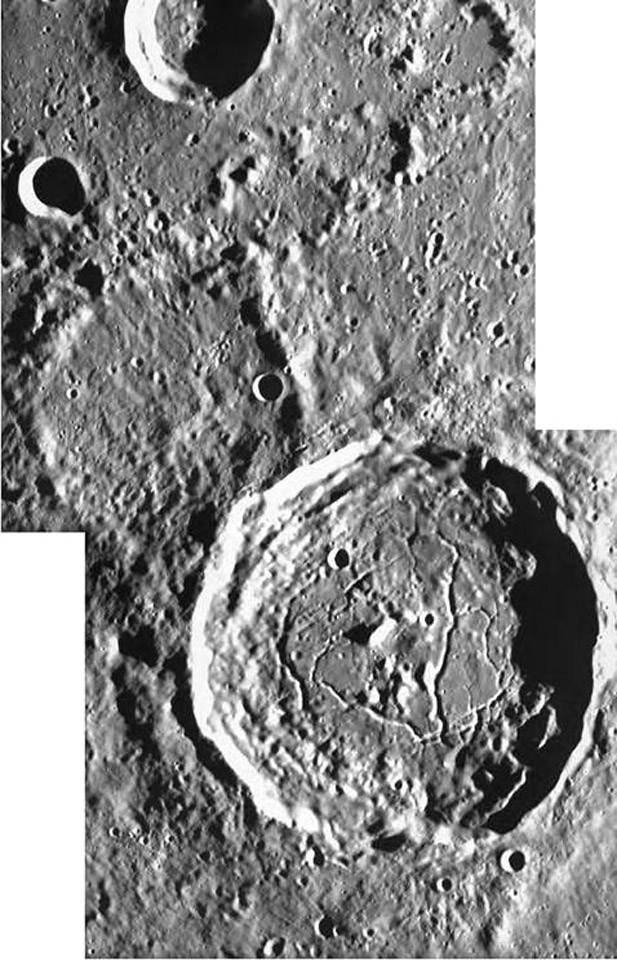
image by ESA/SPACE-X, Space Exploration Institute
Can you image a twin alone? Sabine without Ritter? Atlas without Hercules? Well here is the latter. This is another SMART-1 image that was not released on the ESA website but is on the ESA/SPACE-X site, the company that built the camera. Atlas is 87 km wide with a steep rim crest that gives way to partly slumped wall terraces. The real interest of Atlas is its criss-crossed floor. A strongly defined rille cuts north to south and a narrower family of rilles circles the floor. Atlas is a floor-fractured crater (ffc), as we have said before. But this photo brings to mind another question - what is the nature of the smooth material on the floor of Atlas that is cut by the rilles? Considering that ffc are modified by volcanism - witness the dark halo craters on the northern and southern sides of the floor - the expectation is that the smooth material is volcanic. But a high Sun image shows only the two dark halo craters as dark - the rest of the floor is bright. The smooth material is not mare lava, but could it be lava of a different composition? This is an unanswered question for lunar science.
Technical Details:
3 February 2006. Advanced Moon micro-Imager Experiment (AMIE) camera on SMART-1 spacecraft.
Related Links:
Rükl plate 15
Yesterday's LPOD: A Widget for LPOD
Tomorrow's LPOD: Keeping up with the Smythiis
COMMENTS?
Register, Log in, and join in the comments.



